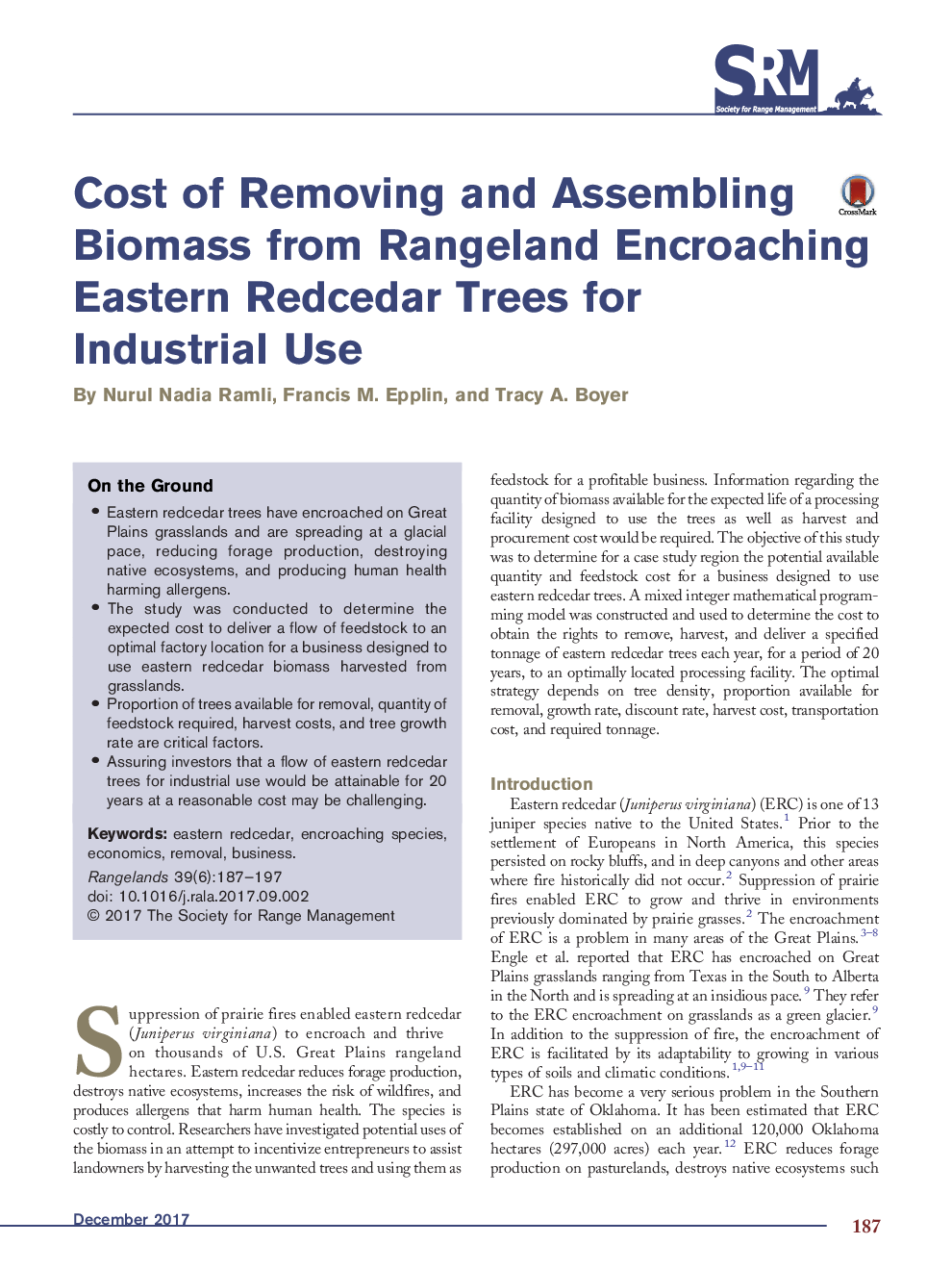| Article ID | Journal | Published Year | Pages | File Type |
|---|---|---|---|---|
| 8849686 | Rangelands | 2017 | 11 Pages |
Abstract
On the Ground
- Eastern redcedar trees have encroached on Great Plains grasslands and are spreading at a glacial pace, reducing forage production, destroying native ecosystems, and producing human health harming allergens.
- The study was conducted to determine the expected cost to deliver a flow of feedstock to an optimal factory location for a business designed to use eastern redcedar biomass harvested from grasslands.
- Proportion of trees available for removal, quantity of feedstock required, harvest costs, and tree growth rate are critical factors.
- Assuring investors that a flow of eastern redcedar trees for industrial use would be attainable for 20 years at a reasonable cost may be challenging.
- Eastern redcedar trees have encroached on Great Plains grasslands and are spreading at a glacial pace, reducing forage production, destroying native ecosystems, and producing human health harming allergens.
- The study was conducted to determine the expected cost to deliver a flow of feedstock to an optimal factory location for a business designed to use eastern redcedar biomass harvested from grasslands.
- Proportion of trees available for removal, quantity of feedstock required, harvest costs, and tree growth rate are critical factors.
- Assuring investors that a flow of eastern redcedar trees for industrial use would be attainable for 20 years at a reasonable cost may be challenging.
Related Topics
Life Sciences
Agricultural and Biological Sciences
Agricultural and Biological Sciences (General)
Authors
Nurul Nadia Ramli, Francis M. Epplin, Tracy A. Boyer,
